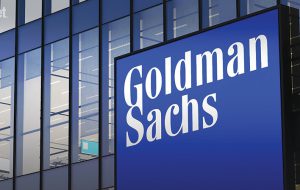BLOOMBERG
Less than a week after Federal Reserve Chair Jerome Powell opened the door to a re-acceleration in the pace of interest-rate hikes, traders slammed it shut again amid the sudden eruption of financial strains at US regional banks.
Goldman Sachs Group economists said they no longer expect the Fed to deliver a rate increase next week, even after US authorities moved to contain a crisis spurred by the exodus of depositors from Silicon Valley Bank and Signature Bank.
Treasury two-year yields dropped 18 basis points to 4.34%, heading for their steepest three-day decline since October 1987, when the Black Monday equities rout stunned markets. Just as that shock interrupted a tightening cycle, traders are now rapidly shifting back to betting on Fed rate cuts for the second half of this year.
The risk of a banking crisis underscores the tension between Fed efforts to cool the economy and tame inflation with burgeoning concerns that 4.5 percentage points of rate hikes in the space of a year will spark a recession and a rout in riskier assets.
Fed officials are entering a quiet period before the March 21-22 meeting. Economists as of last week were overwhelmingly expecting a quarter-point increase at the meeting, with six forecasting a half-point move.
US regulators were spurred into action to contain the problem. The Fed set up a new emergency facility to let banks pledge a range of high-quality assets for cash over a term of one year. Regulators also pledged to fully protect even uninsured depositors at SVB and relaxed terms for lending through the Fed’s discount window.
Those measures should provide “substantial liquidity to banks facing deposit outflows and to improve confidence among depositors,†Goldman’s Jan Hatzius wrote in a note. The Fed is now seen as likely to raise rates a quarter point next week.
 The Gulf Time Newspaper One of the finest business newspapers in the UAE brought to you by our professional writers and editors.
The Gulf Time Newspaper One of the finest business newspapers in the UAE brought to you by our professional writers and editors.
